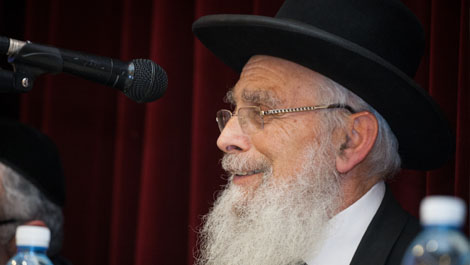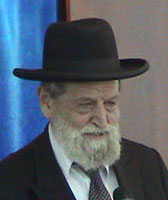Beit Midrash
- Sections
- Chemdat Yamim
- Parashat Hashavua
- Torah Portion and Tanach
- Vayikra
- Tzav
Throughout the generations, only a kohen gadol, kohen mashuach milchama, and a king were anointed with shemen hamischa (Rambam, Klei Hamikdash 1:7). However, at the time of Moshe and Aharon, even Aharon’s sons were anointed as regular kohanim (Vayikra 8:30). If sanctifying a kohen is a proper use of the oil, why should it not be used throughout the generations? The simple answer is that once the sons of Aharon received the status of kedusha with the help of the oil, that status was then automatically transferred from fathers to sons, just as kedushat Yisrael, which required a special process (at Sinai) to begin, is transferred through mothers. Pinchas, who was too young to be anointed and was born before his father’s anointing, indeed needed special help to become a kohen (see Zevachim 101a).
The kohen gadol needed special sanctification in later generations despite the fact that he was born a descendant of Aharon (Rambam ibid. 4:12). If shemen hamishcha existed at the time, it was used; if not, wearing the special bigdei kohen gadol sufficed (ibid.). Again, the explanation is simple. Every kohen is slated at birth to be a kohen, but not every kohen, even if he is the son of the previous kohen gadol, is slated to be the kohen gadol. To turn this possibility into a reality, a special sanctification process is needed.
What about a king? The Rambam (Melachim 1:7) says that the first in a dynasty is anointed with shemen hamischa, as David was by Shmuel, but this sanctification is transferable to all his offspring. Thus, as a rule, kings of the House of David were not anointed with shemen hamishcha. However, the Rambam says there were exceptions, in which subsequent kings from among David’s descendants were anointed. The Rambam cites three kings who were anointed because their ascension to the kingdom was questioned. Shlomo was challenged by Adoniyahu. Yehoash had to replace the bloody rule of Atalya, and Yehoyakim had to be elevated before his brother Yehoyakim. The Rambam says the shemen hamishcha was used in those cases "in order to remove machloket (conflict)." This implies that even though the king did not halachically require the anointing, it was justified to bring peace.
We already saw in Parashat Ki Tisa that the use of shemen hamishcha for a non-kohen is a tremendous chiddush. What we learn here is that not only is it justified when needed to appoint a king, which is after all a very special mitzva that affects the nation, but also to ensure a conflict-free reign. Indeed, peace is not only a crucial blessing in everyone’s home but a crucial element, on a national level, of the proper functioning of the Kingdom of Israel.

Why Do Children Start With Vayikra?
Rabbi Shaul Yisraeli zt"l | 5771

Unknown Spiritual Power
Rabbi Yossef Carmel | Tevet 14 5778

Parashat Hashavua: Can One Give a Loan to Hashem? – part I
Rabbi Yossef Carmel | Elul 5785

Parashat Hashavua: Can One Give a Loan to Hashem? – part II
Rabbi Yossef Carmel | Elul 5785

Rabbi Daniel Mann

Washing Hands with Soap on Yom Kippur
Tishrei 4 5776

Yitro Question
5772

Giving an Envelope on Shabbat to Use for Donations
5773


















